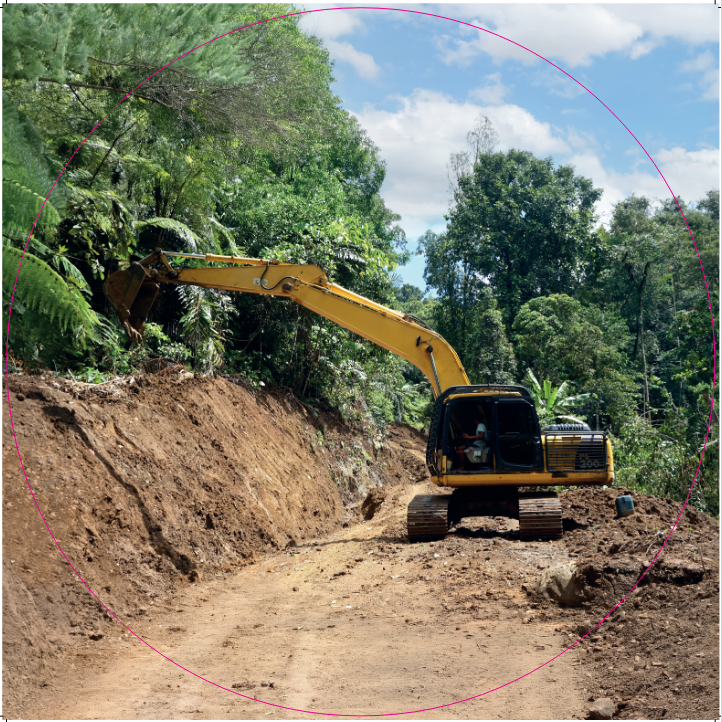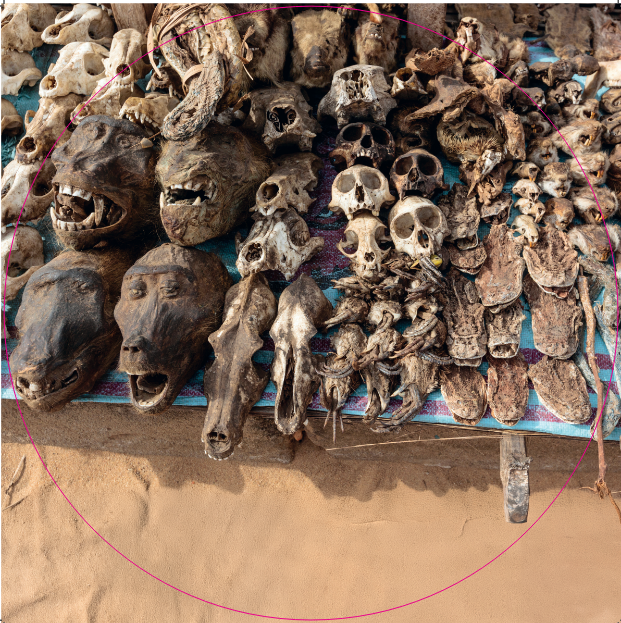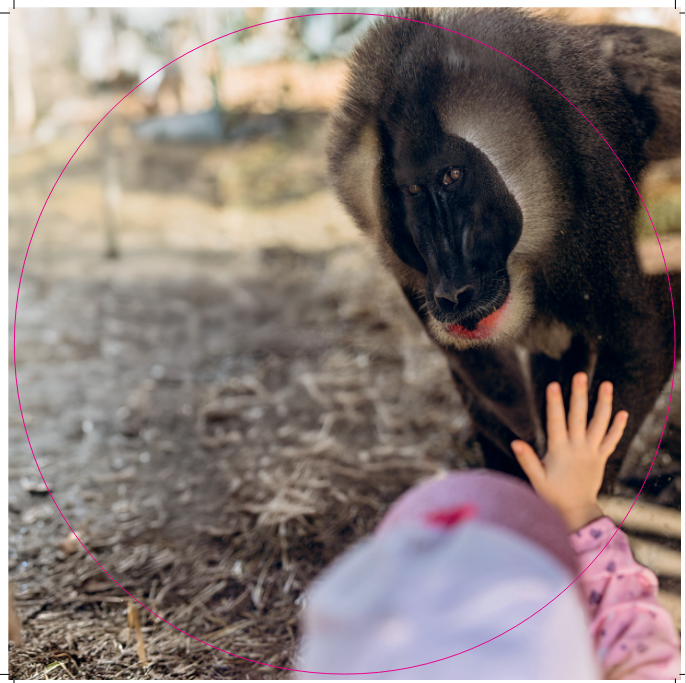Helping people = protecting drills
Even legal protection of the areas where drills live has not yet been enough to shield them from poaching and the conversion of rainforests into human-used land. Ensuring the survival of drills depends on ensuring the communities living within a drill range have an access to sustainable livelihoods. This includes strengthening their ability to cope with the impacts of climate change, such as droughts and floods.

Sleeping Viruses: A Hidden Danger
Most viruses, bacteria, and other microorganisms coexist peacefully with their natural hosts, causing little to no harm. The real danger arises when these pathogens jump to a new species—like humans. This is how diseases such as Ebola, COVID-19, and AIDS have emerged. One major transmission route is through the consumption of bush meat—wild animal meat, often from primates.
As logging and development push deeper into rainforests, people come into contact with previously untouched wildlife. This increases the risk of zoonotic spillover—when a virus jumps from animals to humans. Once a new disease reaches densely populated areas, it can spread rapidly, as seen with Ebola, which has claimed over 15,000 lives in Africa, and AIDS, which has led to more than 40 million deaths worldwide.
Preventing future pandemics means protecting natural habitats and reducing high-risk human-wildlife interactions.

A Czech, a Nigerian, a Cameroonian, and an Equatorial Guinean walk into a bar...
The Czech says, "Do you know what the biggest difference between us is?" The others shake their heads.
"Far more Czechs than Nigerians, Cameroonians, or Equatorial Guineans have seen a live drill at least once in their lives."
Every year, over half a million visitors to SAFARI PARK in the Czech Republic see drills up close. Meanwhile, in the rainforests of Central Africa, these rare primates are becoming more invisible with each passing day.

Drills in the SAFARI PARK
The group of drills you see in front of you is a well-functioning family, where every member has a specific role. Offspring of the most successful females enjoy special privileges from birth. The dominant male usually drives young males out of the group at around six years old to eliminate competition.
However, in the SAFARI PARK, two adult males cooperate within the group- can you spot them?

Vanishing branches beneath the feet of Drills
National parks and reserves
Cross River
Korup
Pico Basilé
Southern Highlands
Drills and Their Decline
Drills depend on forests to survive. Their diet is diverse—they feast on various fruits, roots, and occasionally snack on caterpillars, spiders, or bird eggs. As night falls, they retreat high into the treetops, sometimes up to 10 meters above the ground, where they find safety from predators.
But their world is shrinking. Expanding human settlements, agriculture, and industrial development are breaking up the forests they rely on. These fragmented landscapes make it harder for drills to move between populations or find enough food, pushing them further toward the brink.
Distribution of drills in Africa
30 years ago: 10,000 drills
Today: 5,000 drills
 Safari Park Dvůr Králové
Safari Park Dvůr Králové
